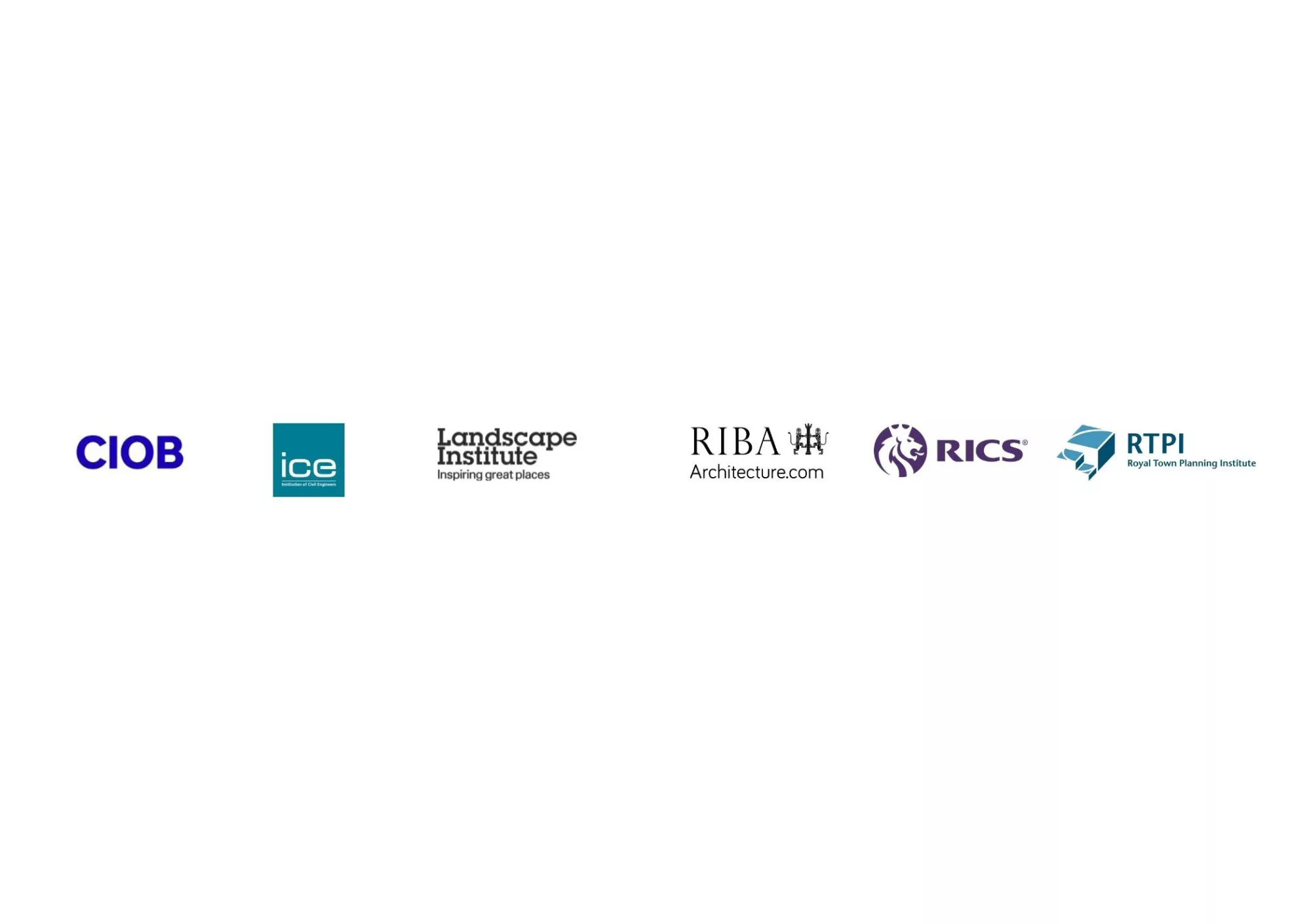
Improving disability inclusion in employment
Eight steps for employers working towards disability inclusion.
On 18 July 2024 the CIOB, along with its B∙E∙ Inclusive partner institutes (ICE, The LI, RIBA, RICS & RTPI), hosted a hybrid event to promote disability inclusion in the workplace. The day was filled with insightful discussions, workshops, and networking opportunities focused on identifying the practical steps employers can take to be more inclusive.
Opened by CIOB CEO Caroline Gumble, the event included presentations from expert speakers including Rosemary Frazer (Spindrift); Tricia Smikle (RNIB); Jean Hewitt (Buro Happold); Tania Martin (Peg) and Charlene Overend & Natalie South-Law (Purple Tuesday). During the final session, delegates were asked to share their expertise and experiences on a range of vital issues with the aim of promoting practical steps with employers in the built environment sector. The following eight steps towards disability inclusion were identified:
1. Adopt a visible commitment to equity
Disabled applicants look for signs that an employer will treat them fairly. Therefore, it is important for all marketing and communications to convey a commitment to disability equity. Social media, websites and advertisements should be inclusive and reflect the diversity of the real world. Employers can further signal their commitment by adopting schemes such as the international hidden disabilities sunflower lanyard initiative. However, if you’re going to communicate disability inclusion, be sure to back this up with concrete disability inclusive action.
2. Promote an inclusive workplace culture
Visible senior leadership promoting disability equity is essential in setting the tone. Without it, some employees may not appreciate that it is an organisational commitment that should inform their day-to-day. Language is also a powerful way of making people feel welcome, so inclusive language guidance can help foster an inclusive workplace culture. The social model of disability can promote an understanding that using the word ‘disabled’ is appropriate as it’s social or attitudinal barriers that disable people, rather than an impairment. Similarly, adopting guidance on hosting accessible events helps ensure that disabled people are able to participate, feel welcome and valued.
3. Inclusive recruitment practices
Inclusive recruitment starts with ensuring that job descriptions include reference to disability equity. CV scanning in shortlisting can result in the exclusion of disabled people and is to be avoided. Similarly, personality profiling exercises can be particularly challenging for neurodivergent people. Alternative inclusive methods of assessing skills and aptitudes should be considered. In the UK, the disability-confident-employer-scheme is one helpful resource in identifying inclusive recruitment practices.
4. Enhance employee data collection
Understanding the representation of disabled people in the workforce is essential. Without data we cannot identify underrepresentation, nor measure the impact of actions taken to promote equity & inclusion. Employees should be prepared to disclose their data for these reasons. However, employers are advised to encourage disclosure by reassuring staff that data is confidential; by explaining what it will be used for; and by demonstrating positive actions that come from data collection. The BE Inclusive partnership has produced some guidance on data collection you can download the PDF here. If you need it/want it/would prefer it an alternative format, please contact: [email protected].
5. Reasonable adjustments
The initial offer of reasonable adjustments (RAs) should be a standard element in recruitment communications. The induction process should make clear that RAs are available to employees, with guidance for managers & staff on what they are and when they would be appropriate and helpful. Disability inclusion also means having good processes, mechanisms for existing staff who become disabled in the course of their employment. Employers can consider adopting a RA Passport or record to be kept updated by the employee. In the UK, government schemes such as access-to-work can provide financial and practical assistance to disabled employees.
6. Allocate appropriate resources
Allocating resources to EDI is necessary in achieving organisational change. This could be the appointment of experienced EDI practitioners, or by establishing employee networks to listen and amplify the voices of disabled staff. However, placing the responsibility of making the necessary changes solely with disabled staff is neither practical nor equitable. The provision of EDI training for managers can have great impact on disability inclusion. Adopting disability pay gap reporting will facilitate benchmarking and year-on-year trend analysis. There should also be appropriate resources identified for the provision of reasonable adjustments.
7. Address barriers
Barriers to disability inclusion come in all shapes and sizes and are not only physical.
Access audits demonstrate commitment and can identify areas for improvement in the workplace. However, offering inclusive adjustments such as accessible IT options (e.g. meeting platforms with captioning/subtitles) are equally important. Flexible working can also help colleagues by allowing them to travel earlier or later in the day to avoid the busiest times. Consulting with and listening to disabled staff about their needs is essential. In addition, robustly but fairly responding to complaints of discrimination will show a determination to promote inclusion and a sense of belonging for disabled colleagues.
8. External accreditation
External accreditation can be a very useful tool. The right scheme or framework can help inform gap analysis by providing benchmarks and examples of best practice to aim for. Examples of disability focused schemes in the UK include the government’s disability-confident-employer-scheme which becomes increasingly helpful at the highest level. A wide range of resources and support can be sourced at the business-disability-forum. However, organisations with stakeholders beyond the UK should consider different approaches to disability equality and the implications of different legislation around the globe.
Learn more

Contact our Press Office
We welcome requests for information, comments and interviews from journalists across the globe so please feel free to contact us: